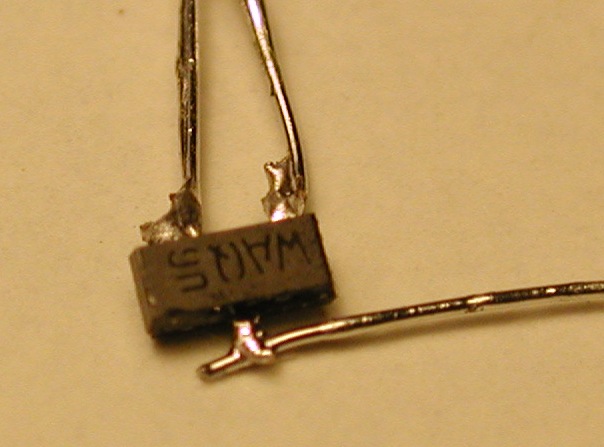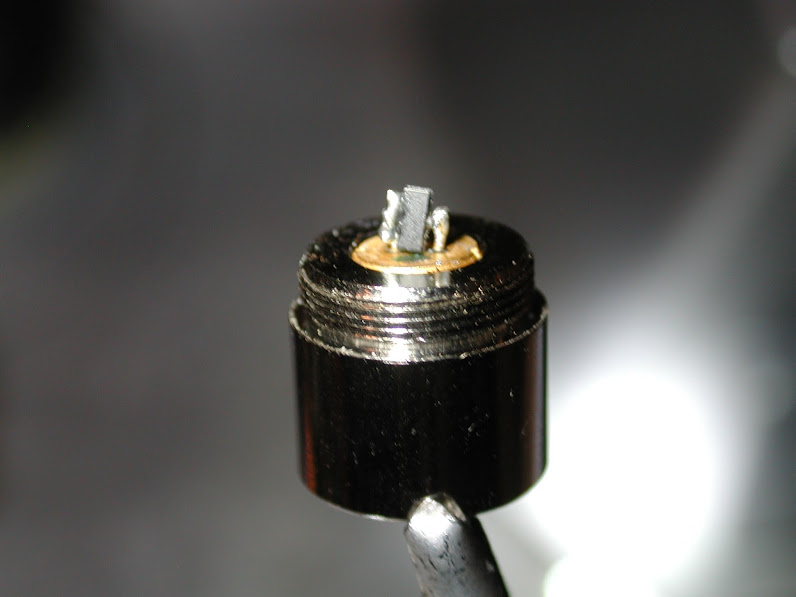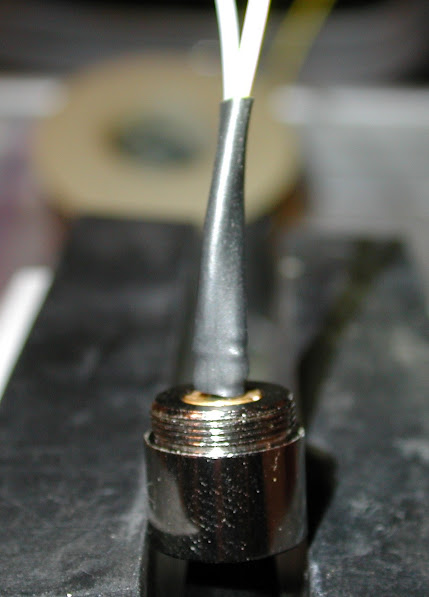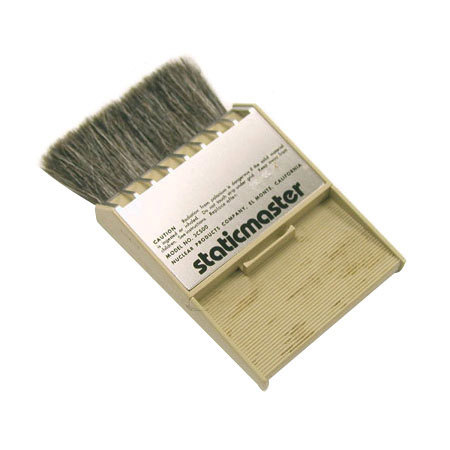- Joined
- Jul 27, 2010
- Messages
- 154
- Points
- 18
Inexpensive ESD protection.
If you are good at soldering very small things, read on!
The first place you should look when thinking about ESD protection for your laser diodes (LDs) is in the TVS category. TVS's are designed for ESD and transient protection. The standoff voltage of a TVS is the voltage that, with some variation, falls below the breakdown voltage (Vbr) of the device. The "head room" is the difference the two ratings. TVS headroom is often set to accommodate the world of digital logic which is a bit more forgiving when it comes to transients. This is why I selected TVS's by their minimum breakdown voltage instead. The minimum breakdown voltage is basically their zener voltage. But TVS's trade toughness for accuracy so their Vbr isn't as precise as a zener diode or voltage reference part.
When you look into these parts, download the data sheets and look both at the specs and the pinouts. Unfortunately, for the SOT parts, they aren't standardized for polarity. I connect the two diodes in the SOT package in parallel to provide a small amount of reverse polarity protection. If you are worried about reverse voltage, throw a Schottky diode in between your LD and power supply (any rectifier, but Schottky has the lower voltage drop and will dissipate less heat at high current). The TVS's below are UNIDIRECTIONAL and conduct at ~0.7V if voltage is applied backwards. If you don't want to care about the polarity of the part, there are bidirectional versions of these parts.
If possible, check your LD voltage at the current that you intend to run - IMPORTANT! Measure when the LD is COLD! The voltage goes down as the LD heats up. This will help you determine which voltage of TVS to use.
Here are a few examples. There are a LOT more choices, but I did a search on what was in stock at Digikey.com
For Nichia 445nm:
NXP PESD5V0U1UT,215 ... 568-4058-1-ND ............ 7.0V $0.53
NXP PESD3V3U1UT,215 .... 568-4047-1-ND .............. 5.8V $0.53 (1)
For BluRay 405nm
Vishay VESD08-02V-GS08 751-1438-1-ND ............. 10.2V $0.42
NXP PESD5V0U1UT,215 _ _ 568-4058-1-ND _ ._ ._ 7.0V $0.53 (2)
MCC SMCJ6.5A-TP _ _ _ _ SMCJ6.5A-TPMSCT-ND _ 7.2V $0.76 (2b)
(1) I measured my 445nm at 4.7V for 1250ma, so 5.8Vbr would work.
(2) I used this on a 405nm LD running at 200ma. Check your LD voltage at the current that you intend to run - IMPORTANT! Measure when the LD is COLD! The voltage goes down as the LD heats up.
(2b) If you want more "head room" this might be better.

Testing a SOT TVS - 30ga wires attached. In the case of the TVS's for 445nm and 405nm LD's, the side of the TVS with the two legs is the plus (+) side. The single pin side attaches to the minus (-).

TVS soldered onto a 405nm LD in an Aixiz module.

Wires on.

Shrunk up.
If you are good at soldering very small things, read on!
The first place you should look when thinking about ESD protection for your laser diodes (LDs) is in the TVS category. TVS's are designed for ESD and transient protection. The standoff voltage of a TVS is the voltage that, with some variation, falls below the breakdown voltage (Vbr) of the device. The "head room" is the difference the two ratings. TVS headroom is often set to accommodate the world of digital logic which is a bit more forgiving when it comes to transients. This is why I selected TVS's by their minimum breakdown voltage instead. The minimum breakdown voltage is basically their zener voltage. But TVS's trade toughness for accuracy so their Vbr isn't as precise as a zener diode or voltage reference part.
When you look into these parts, download the data sheets and look both at the specs and the pinouts. Unfortunately, for the SOT parts, they aren't standardized for polarity. I connect the two diodes in the SOT package in parallel to provide a small amount of reverse polarity protection. If you are worried about reverse voltage, throw a Schottky diode in between your LD and power supply (any rectifier, but Schottky has the lower voltage drop and will dissipate less heat at high current). The TVS's below are UNIDIRECTIONAL and conduct at ~0.7V if voltage is applied backwards. If you don't want to care about the polarity of the part, there are bidirectional versions of these parts.
If possible, check your LD voltage at the current that you intend to run - IMPORTANT! Measure when the LD is COLD! The voltage goes down as the LD heats up. This will help you determine which voltage of TVS to use.
Here are a few examples. There are a LOT more choices, but I did a search on what was in stock at Digikey.com
For Nichia 445nm:
NXP PESD5V0U1UT,215 ... 568-4058-1-ND ............ 7.0V $0.53
NXP PESD3V3U1UT,215 .... 568-4047-1-ND .............. 5.8V $0.53 (1)
For BluRay 405nm
Vishay VESD08-02V-GS08 751-1438-1-ND ............. 10.2V $0.42
NXP PESD5V0U1UT,215 _ _ 568-4058-1-ND _ ._ ._ 7.0V $0.53 (2)
MCC SMCJ6.5A-TP _ _ _ _ SMCJ6.5A-TPMSCT-ND _ 7.2V $0.76 (2b)
(1) I measured my 445nm at 4.7V for 1250ma, so 5.8Vbr would work.
(2) I used this on a 405nm LD running at 200ma. Check your LD voltage at the current that you intend to run - IMPORTANT! Measure when the LD is COLD! The voltage goes down as the LD heats up.
(2b) If you want more "head room" this might be better.
Testing a SOT TVS - 30ga wires attached. In the case of the TVS's for 445nm and 405nm LD's, the side of the TVS with the two legs is the plus (+) side. The single pin side attaches to the minus (-).
TVS soldered onto a 405nm LD in an Aixiz module.
Wires on.
Shrunk up.
Last edited:






